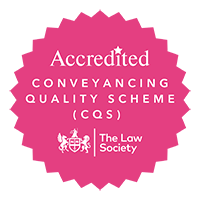In his recent budget the chancellor abolished stamp duty for all first-time buyers of shared ownership properties costing up to £500,000. Graham Ireland examines the issues.
Under the previous system, introduced in the November 2017 budget, first-time buyers were exempt from stamp duty on properties worth up to £300,000 as well as the first £300,000 on properties costing up to £500,000.
To be eligible for the relief, those buying shared ownership properties still had to elect to be taxed on the full market value of their new home, or on the first share of the property purchased, for example 50 per cent.
The relief didn’t apply to subsequent share purchases, for example if an owner wanted to increase to 75 per cent of ownership.
The new announcement now extends these privileges and means first-time buyer relief for shared ownership properties is now available on subsequent purchases of the share of the property.
The move, designed to help younger people onto the property ladder, works in the same way as the existing relief. No stamp duty is payable on homes valued up to £300,000, while a five per cent stamp duty charge is applied for properties purchased between £300,000-£500,000.
The relief has also been backdated to shared ownership property purchases to November 22, 2017, meaning those who’ve bought subsequent shares in their property since this date will be able to claim the tax back. Claims need to be made to HMRC no later than October 28, 2019.
What is the shared ownership scheme?
The shared ownership scheme is for non-homeowners – including first-time buyers and people who have owned a property previously, but don’t currently own one – with an annual income of £80,000 or less (or £90,000 or less in London).
The scheme involves buying a share of a property – typically between 25 per cent and 75 per cent – with a housing association owning the remainder, on which rent is paid. The government wants to expand the scheme and is calling for investors to collaborate on the creation of more shared ownership homes.
Big deposits are the main hurdle for first time buyers
While the change is welcome, we should keep in mind that the shortage of first-time buyers is largely due to them having to find substantial deposits – the UK average was £30,000 last year, as opposed to a typical stamp duty charge of £1,650.
As a result, young people are increasingly having to rent or live with parents. Office for National Statistics (ONS) figures show that the number of young adults continuing to live at the family home has reached an all-time high, with more than 25 per cent of people aged 20 to 34 still living with their parents. This is an increase from 2.7 million to 3.4 million in the past 20 years.
While this is partly a result of people staying in education longer and having children at an older age, the ONS believes the increased cost of buying a first home is also a significant cause.
The importance of regional variations
Government figures published in June showed the average cost of a house in the North West was £155,868, which had not increased at all since March. This compared with the average price of a London house, which was £484,584 in June – up 2.4 per cent on the figure for March.
Why there is hope for a more positive future
Time will tell whether the latest change will have any material effect on the affordability of properties for first-time buyers in our region, but we very much hope that this and other measures to help first-time buyers – such as the Help to Buy Isa scheme – will have a positive impact.
For more information on the stamp duty change, or any information on purchasing a home, contact Graham Ireland on 01254 272640 or email him at graham.ireland@whnsolicitors.co.uk













